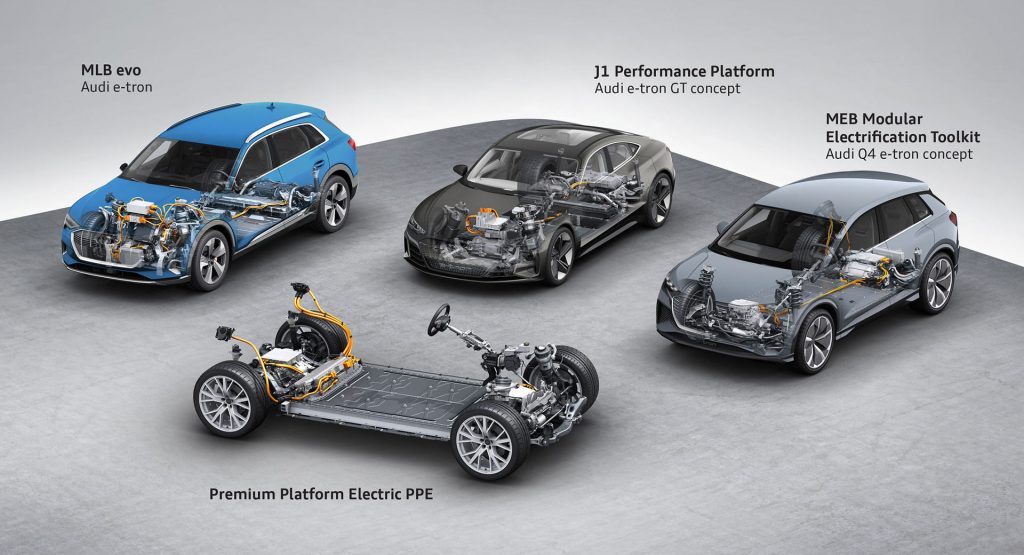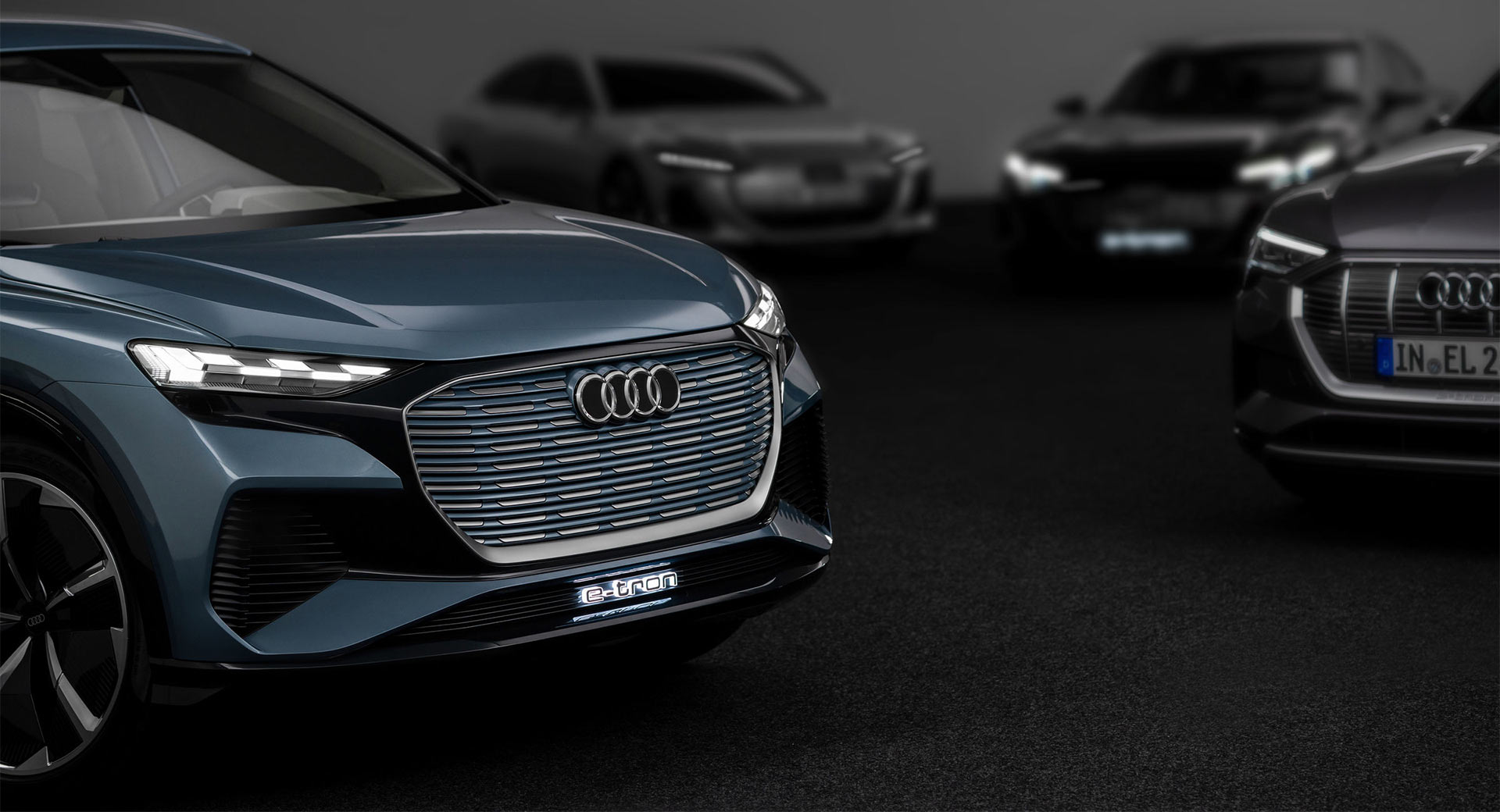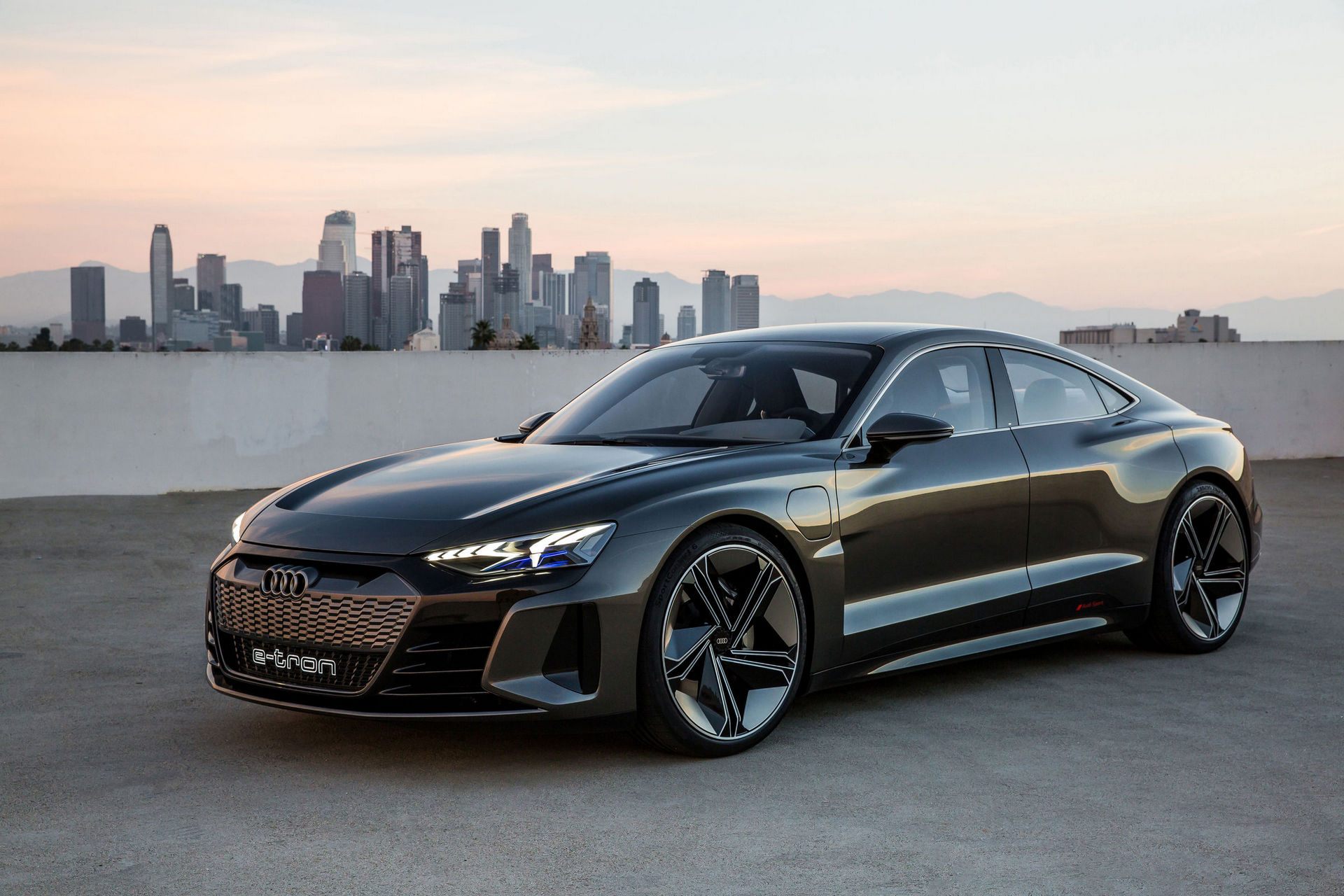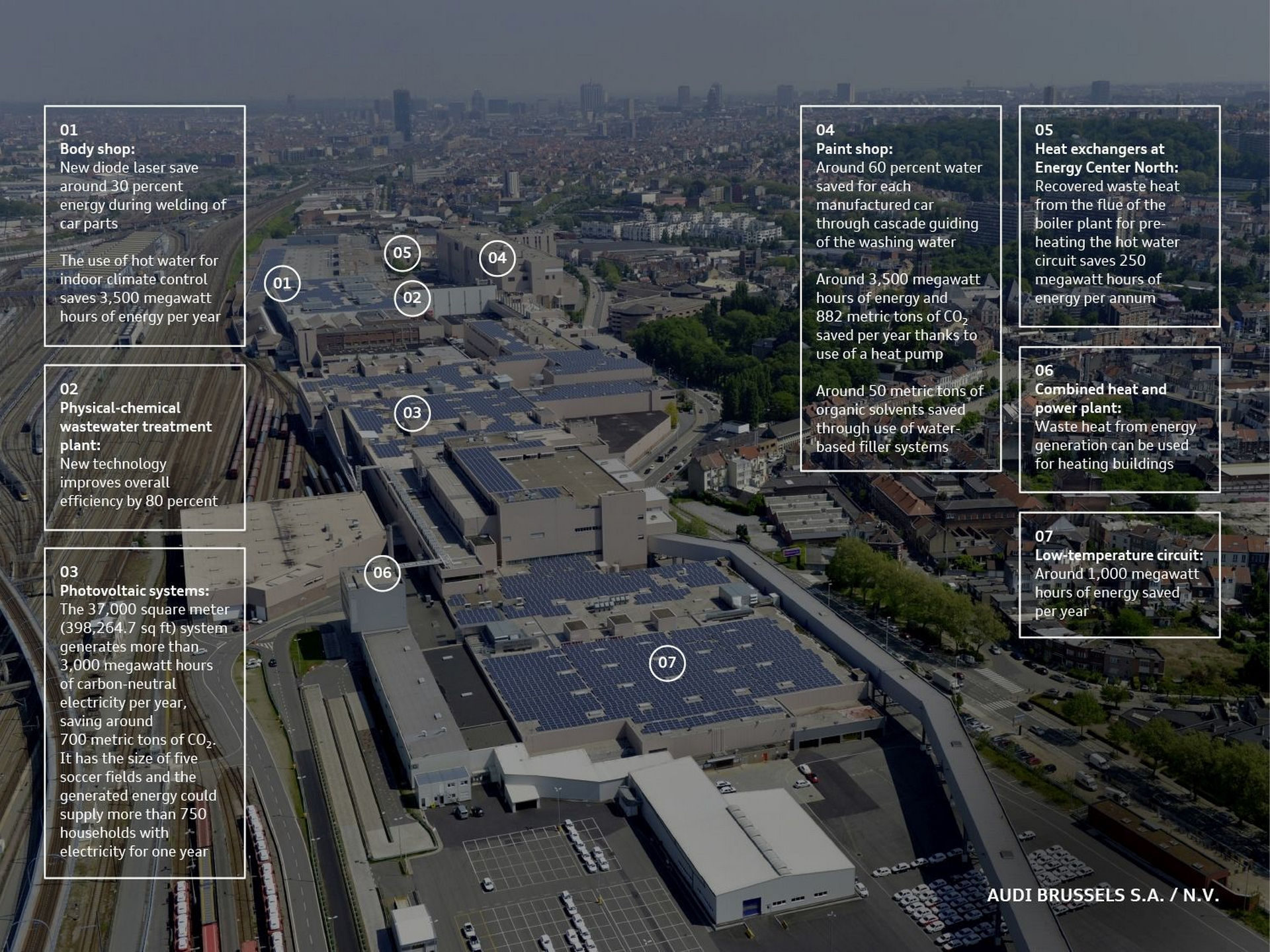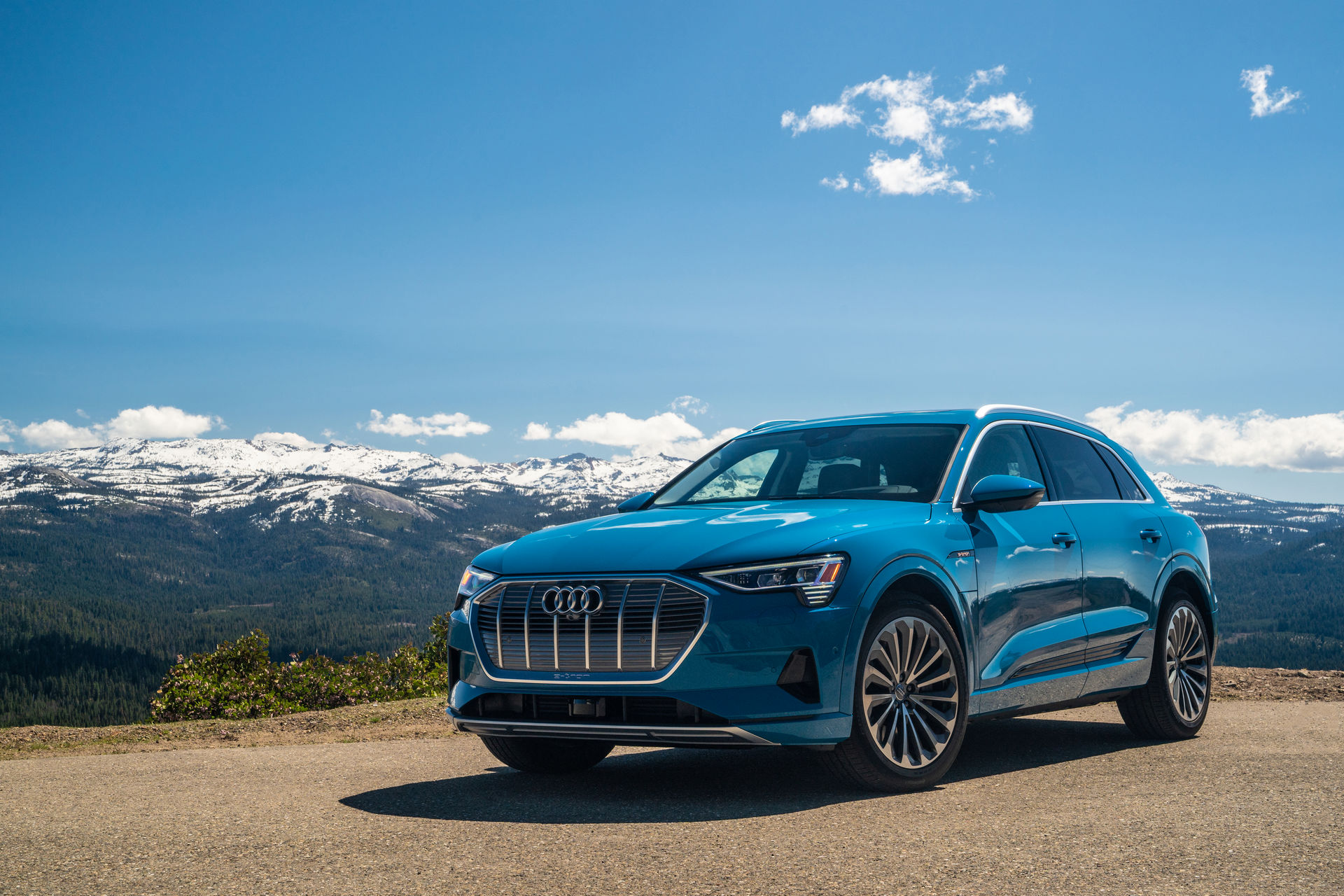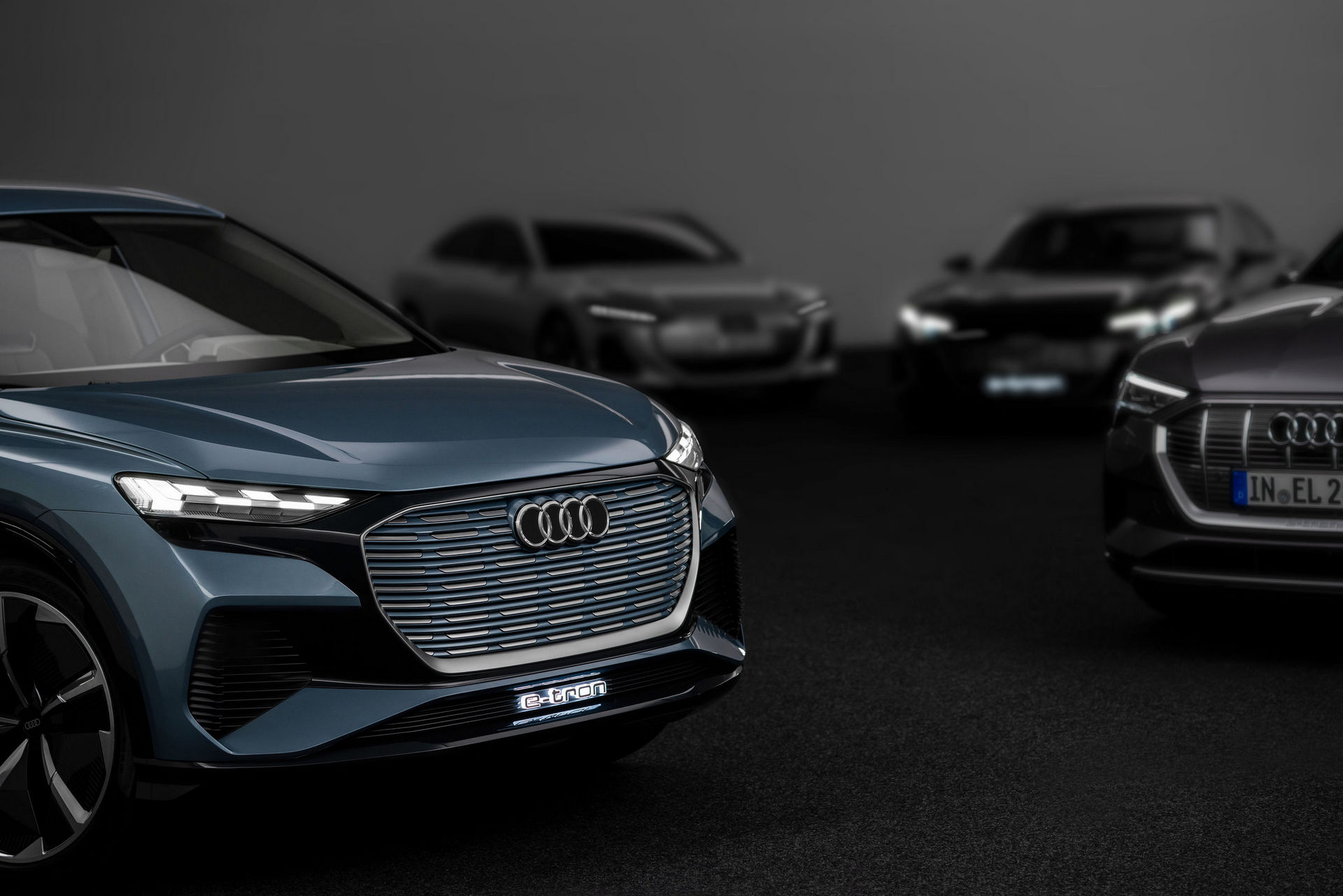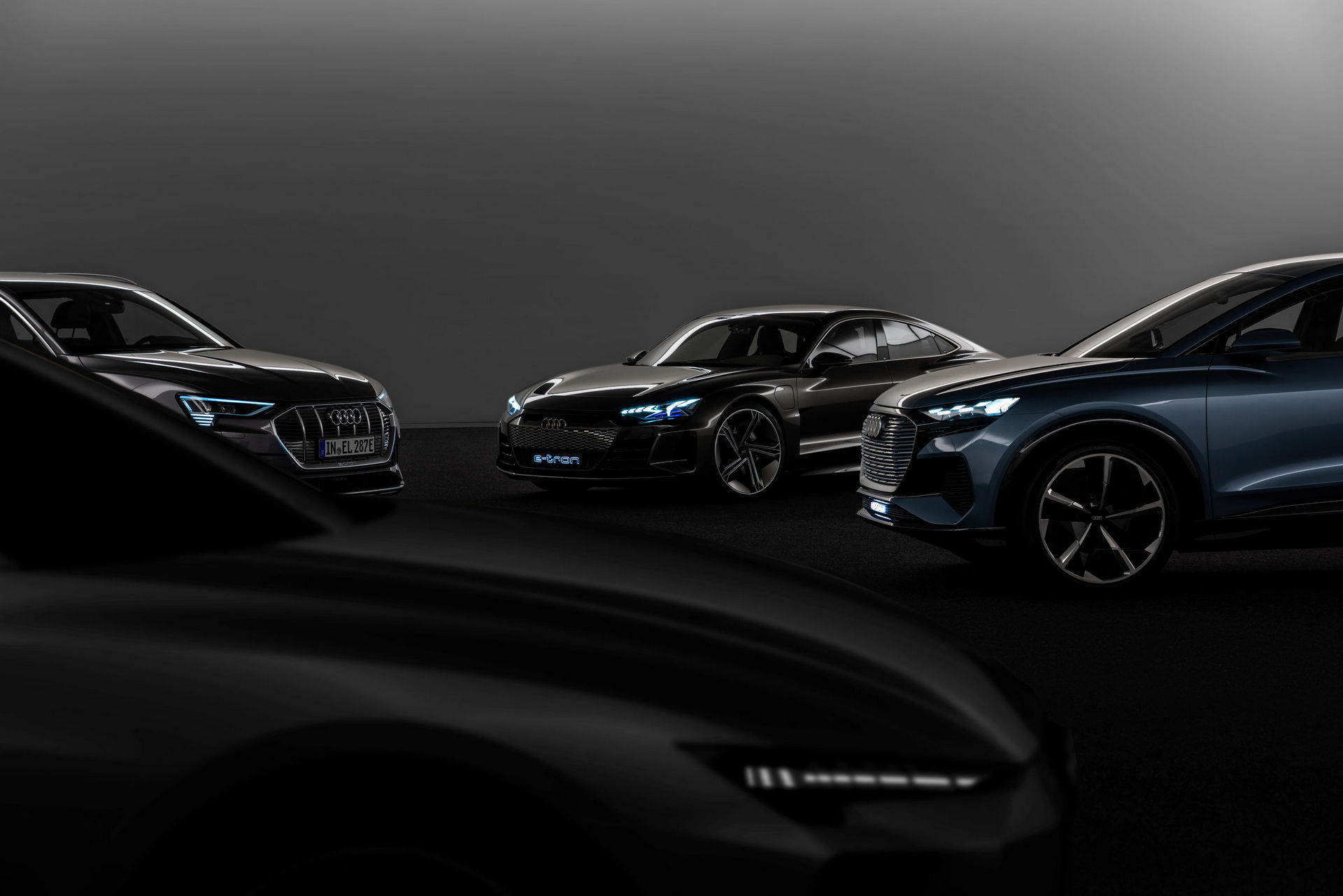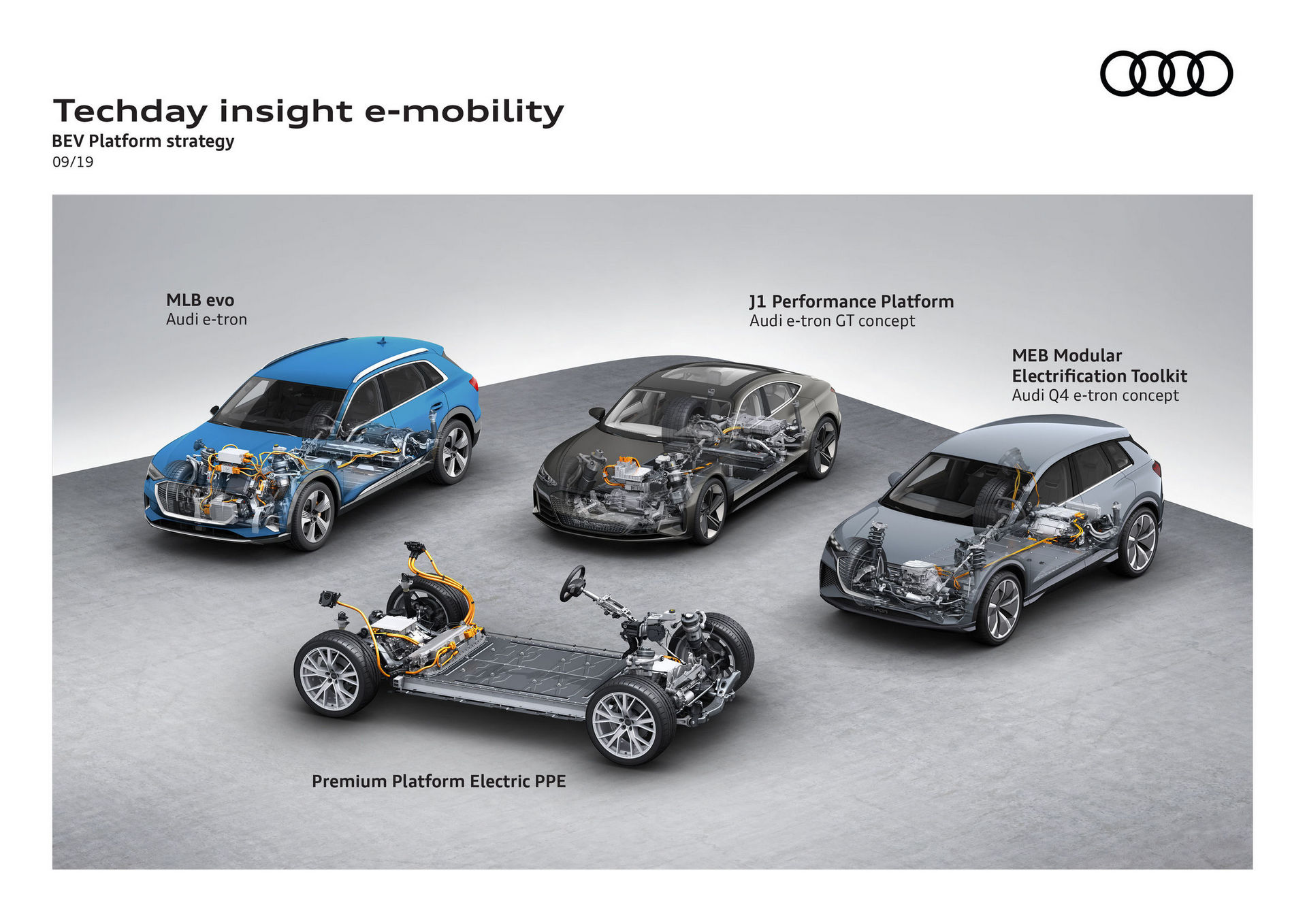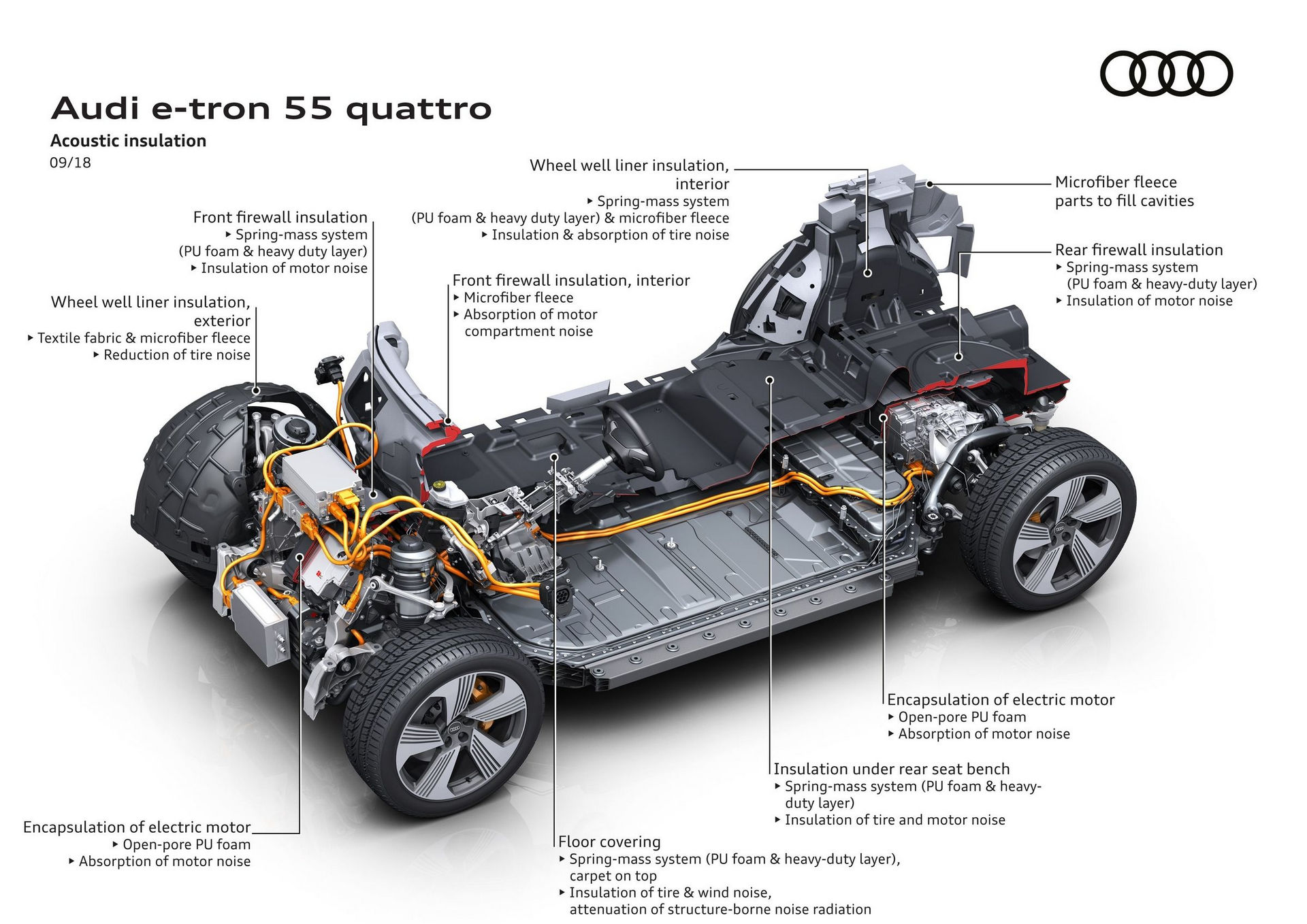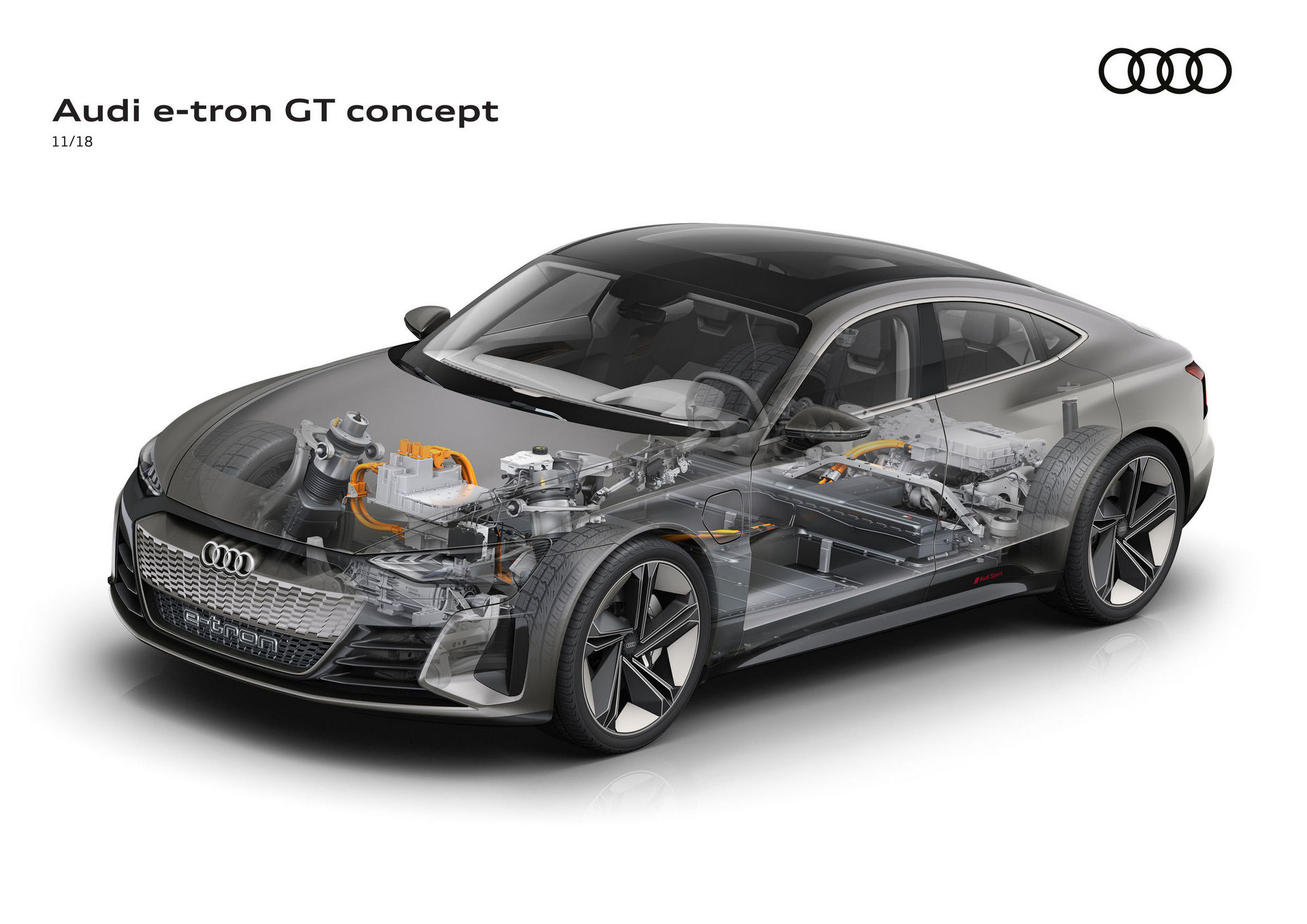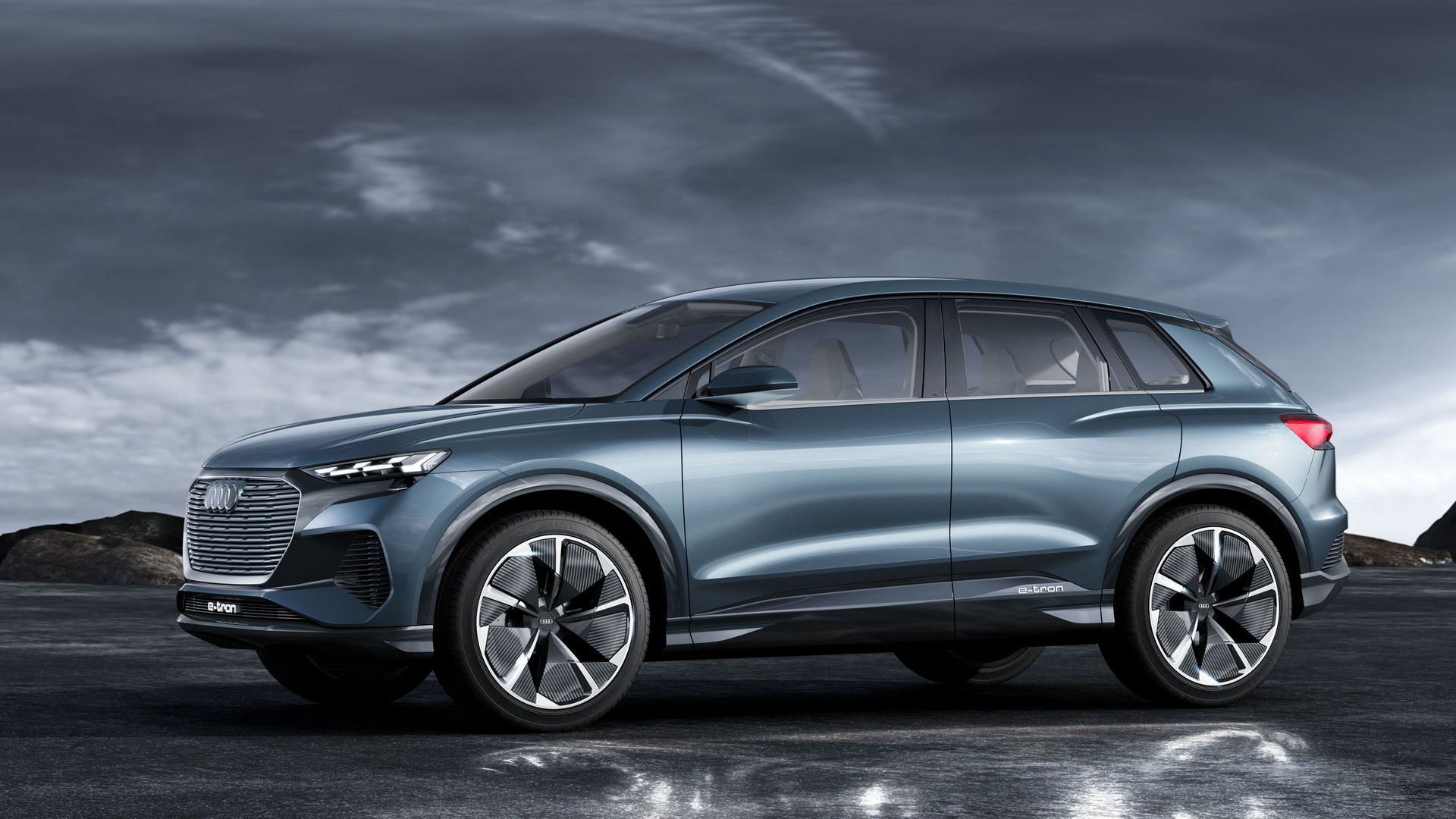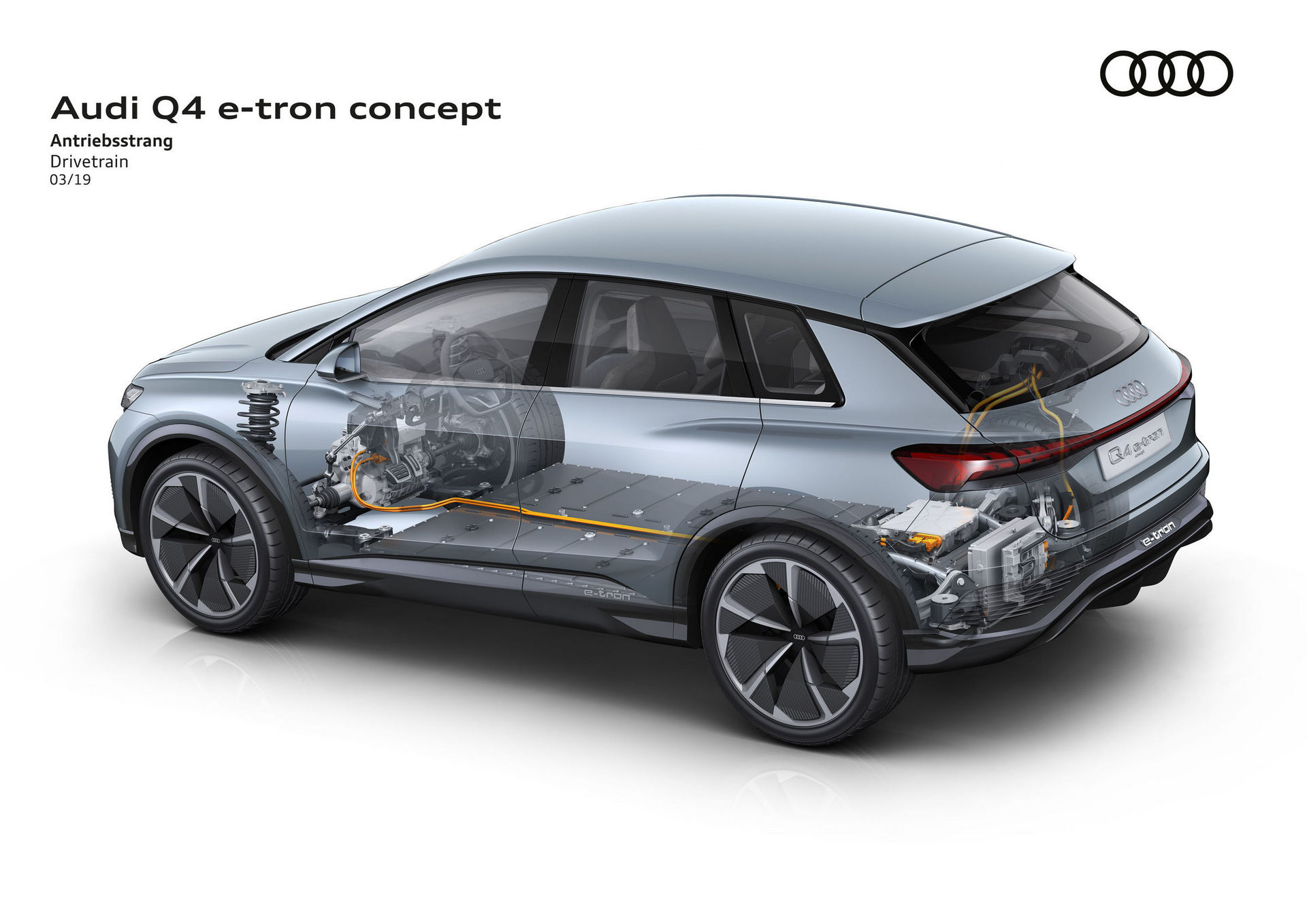Audi is embarking on an ambitious plan to have 30 electrified models on sale by 2025, with 20 of them set to be fully electric.
Launching so many EVs in such a short period of time is no small task and will be achieved through four distinct platforms underpinning a variety of models. The first platform being used by the German marque’s new wave of electrified vehicles is the MLB evo architecture, underpinning the current e-Tron SUV and the forthcoming e-Tron S Sportback.
Interestingly, it’s not just EVs that use this platform as a plethora of VW Group products are also underpinned by the MLB evo platform, ranging from the current Audi Q7, A4, A5, A6, A7, A8, Q5, and Q8, to the likes of the Lamborghini Urus and Porsche Cayenne.
Read Also: 2021 Audi e-tron GT – Electrifying Looks, Performance & Everything Else We Know
The second platform set to underpin a host of new-age vehicles from Audi is the J1 architecture. This platform has been co-developed with Porsche and debuted beneath the skin of the all-electric Taycan. It will next be used by the production-spec Audi e-tron GT performance sedan, which in concept form featured two electric motors producing a combined 582 hp and 612 lb-ft (829 Nm) of torque.
Making the J1 platform special is the fact that it supports an 800-volt system, allowing for ultra-fast charging. In fact, the e-tron GT will be able to charge to 80 per cent in just 20 minutes.
Next up is the MEB platform. As with the MLB evo, the MEB platform will be used by a plethora of models from the VW Group. Mind you, unlike the MLB evo that supports ICE-powered vehicles, MEB is dedicated to electric powertrains. Audi will use it for the forthcoming Q4 e-tron, with other models from the VW Group to use MEB including the ID.3 and the future ID.4, ID. Buzz, and ID. Vizzion.
The fourth and final platform to underpin Audi models of the future is the PPE (Premium Platform Electric). Like the J1 platform, PPE has been developed by Audi and Porsche and allows for both low- and high-floor SUVs, Sportbacks, Avants, and crossovers that are mid-size or larger. This platform supports an 800-volt electrical architecture but it remains unclear which future VW Group models will use it.



